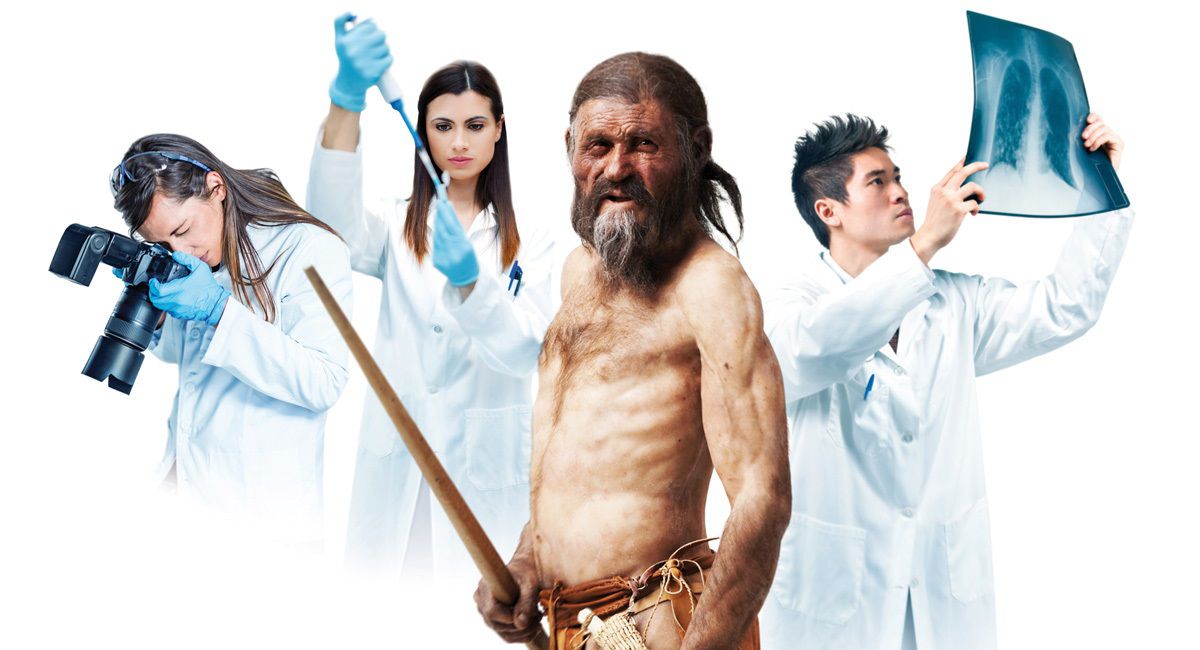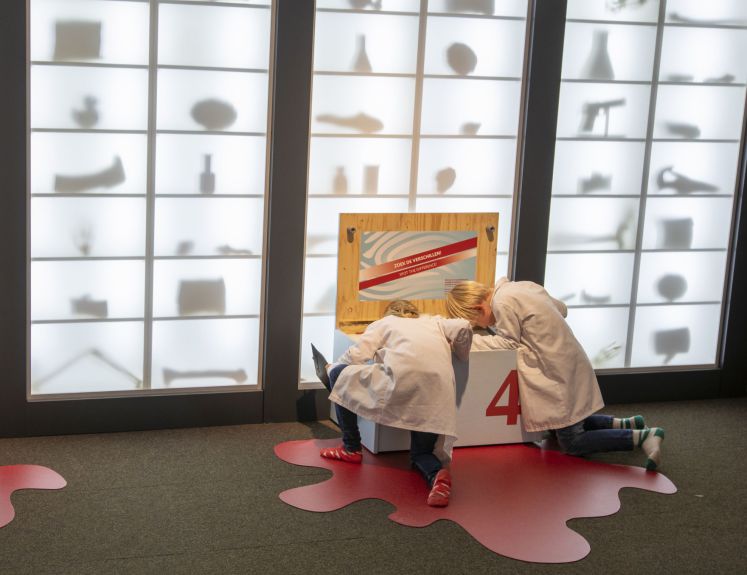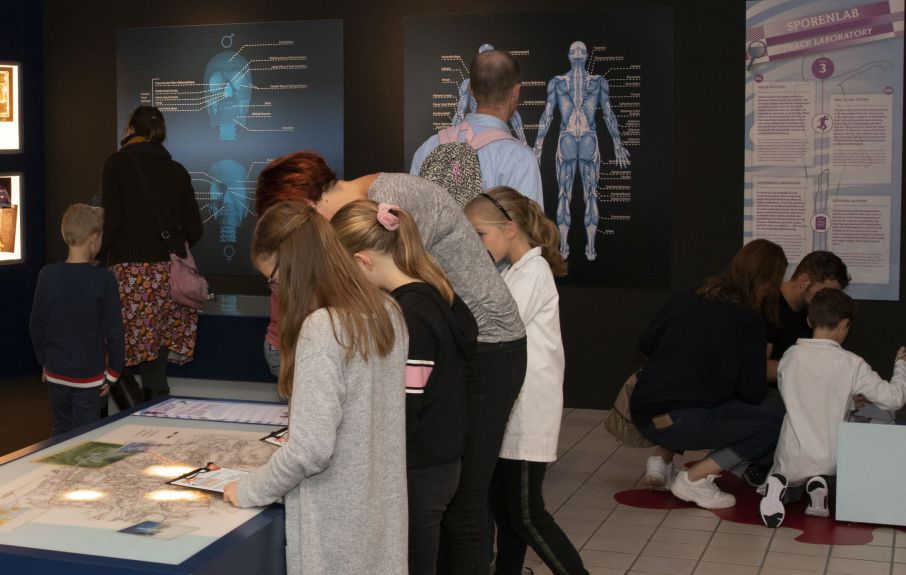Ötzi the Iceman
investigate the mysterious icemummy
In this exhibition you will learn more about the archaeological discovery of Ötzi, the icemummy from the Alps, and the forensic investigation that followed.
You will investigate the oldest human body*) found so far in Europe. Thanks to modern scientific research techniques, Ötzi still has many stories to tell about his life and death.
In 1991 a special discovery was made high up in the Alps. A body was found and soon it became clear that this was not from a recently deceased skier, but from a man who lived more than five thousand years ago. He was named Ötzi, after his location in the Ötztal. What makes this icemummy so special is that his body is almost completely intact. He was found with a large part of his clothes and possessions. At the time of his death, he carried a bow, several arrows, a backpack and a copper axe.
By using modern scientific and forensic techniques in the investigation of Ötzi, the scientists get a unique view of the life and environment of a person from the Copper Age. We know that Ötzi was 46 years old, that he had very bad teeth because he used his teeth as tools and that his body was full of tattoos. Traces of arsenic have also been found in his hair, indicating that he worked with minerals, probably the melting of copper. The cause of death is also investigated. Ötzi died from an arrow, shot from behind. How and why this happened remains a mystery...
*) Note: The real Ötzi lies safely in the South Tyrolean Archaeology Museum in Bolzano in a cold store under constant humidity. In the Museon you can see good replica's. If Ötzi would travel himself, his body would soon start decaying.







